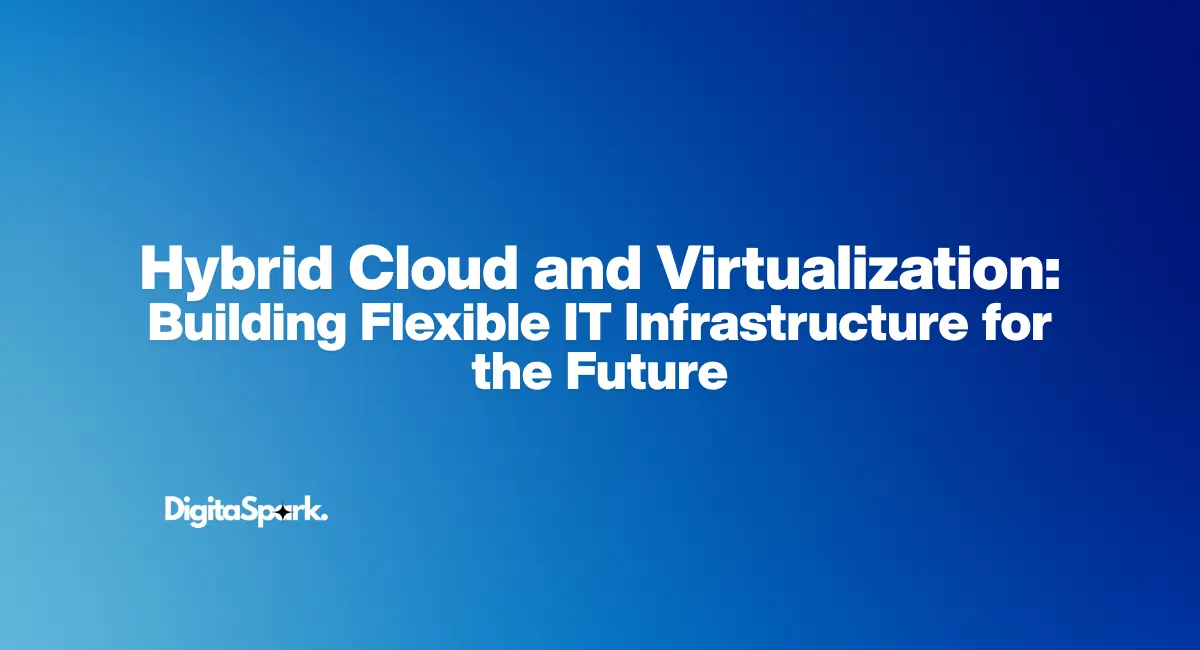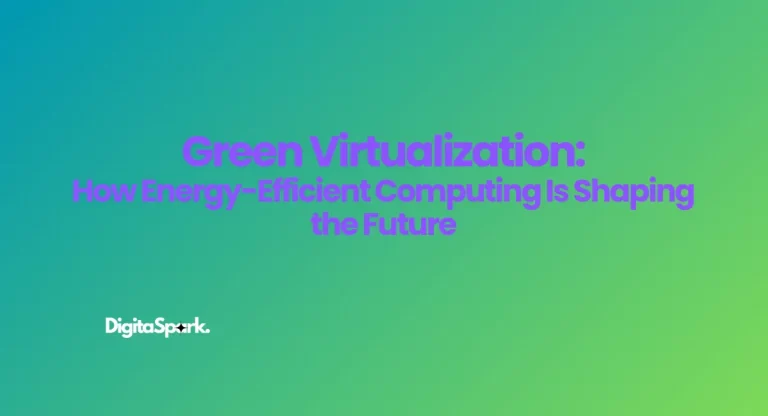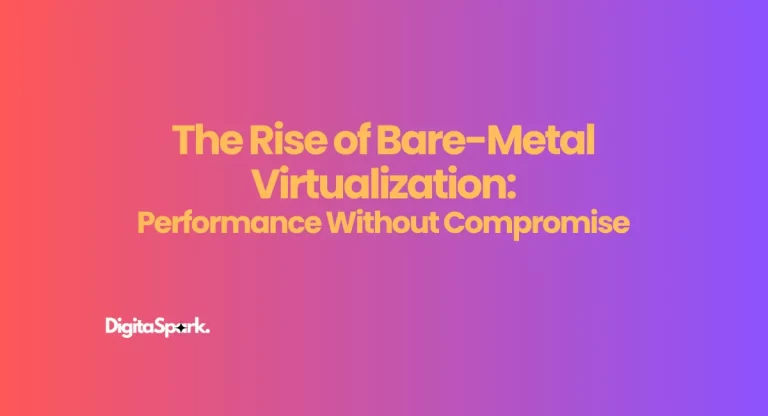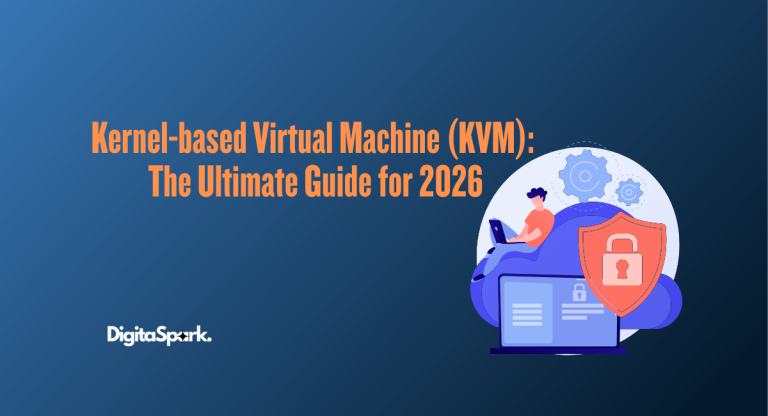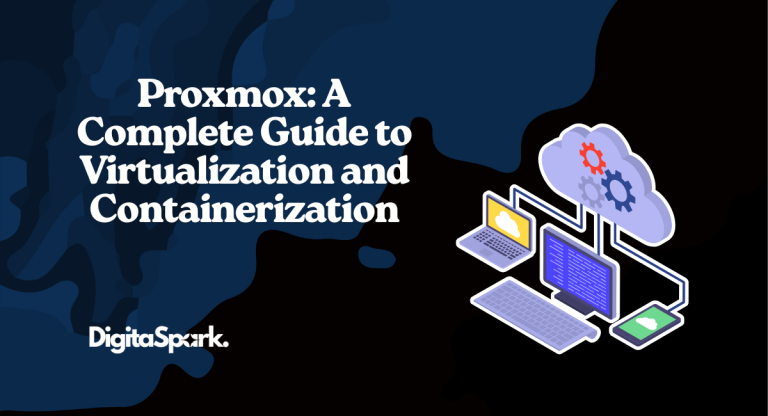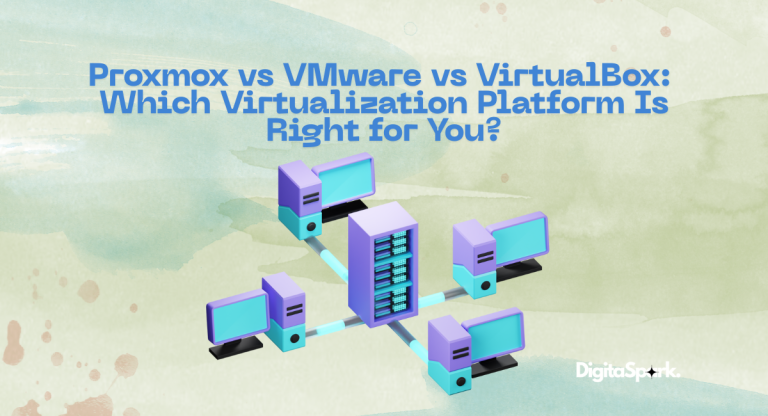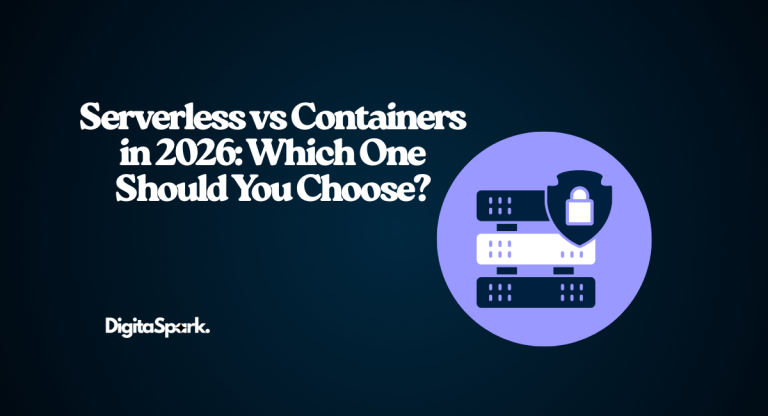Hybrid Cloud and Virtualization: Building Flexible IT Infrastructure for the Future
Stepping into the near future of IT infrastructure, you’ll quickly notice one theme over and over: flexibility. Businesses want their systems to adapt—fast. When workloads spike, when new regulations pop up, when data sensitivity suddenly matters more, or when you need fierce performance without huge cost overruns. That’s where hybrid cloud + virtualization comes in: a combination that promises agility, efficiency, and resilience. If you’re unfamiliar with the concept of virtualization, I have written an in-depth blog about Virtualization.
In this blog, I’ll walk you through what hybrid cloud means (with virtualization as its backbone), why it’s becoming essential in 2025, what the latest trends are, what the benefits & challenges look like, tools and practices that work, and finally how you can move toward it without tripping over common pitfalls.
What is Hybrid Cloud + Virtualization?
First, definitions (so we’re on the same page):
- Virtualization = creating “virtual” versions of hardware resources (servers, storage, networks). One physical machine can host multiple virtual machines (VMs) or containers. It lets you run more workloads per server, use hardware more efficiently, and adjust resource usage dynamically.
- Hybrid Cloud = an IT environment that combines at least two kinds of platforms: typically on-premises/private cloud + public cloud + sometimes edge infrastructure. The idea is to place different workloads in different environments, depending on their needs (security, latency, cost, compliance, etc.).
Putting them together: virtualization makes the hybrid cloud possible in an efficient, manageable way. Because virtual resources are portable, configurable, and easier to automate, they help workloads move between private/on-premises and public cloud, often dynamically. Without virtualization (and related technologies), hybrid cloud becomes very messy, expensive, and brittle.
Why Hybrid Cloud + Virtualization are Strong Partners in 2025
Here are the big forces pushing organizations toward hybrid cloud + virtualization now:
- Business Uncertainty & Demand Spikes
Markets change fast. You might need to scale out for a short campaign, then scale back. Hybrid cloud lets you burst into public cloud when needed, but keep steady, sensitive workloads on-premises. Virtualization ensures you’re not overpaying when workloads are low. - Cost Optimization
Running everything in public cloud is simple but often more expensive, especially for predictable or always-on workloads. Virtualization helps you get more out of your private or on-premises infrastructure. Hybrid cloud allows you to mix the cost models: CapEx + OpEx. - Security, Compliance & Data Sovereignty
Some data must stay within certain geographies or under stricter control. Hybrid models let you keep those on-premises or in private cloud, while less sensitive workloads live in public cloud. Virtualization helps ensure consistent security policies, even when workloads move. - Performance and Latency Requirements
Applications like IoT, real-time analytics, AR/VR, edge computing all need low latency. Hybrid + virtualization lets you put compute close to the user (on edge or on-prem), while still leveraging cloud for heavy lifts. - Sustainability Pressures
Organizations are trying to reduce carbon footprints, waste, and energy usage. Hybrid clouds allow better optimization: you can place workloads where energy is cheaper/cleaner, use on-prem resources more efficiently via virtualization, shut off idle capacity, etc. Studies show that picking more efficient deployment strategies saves CO₂ emissions.
Key Trends in 2025 for Hybrid Cloud + Virtualization
Here are what people are seeing right now—what’s growing, what’s new, what matters.
| Trend | What It Means | Why It Matters |
| AI-Driven Orchestration & Control Planes | Tools that analyze workload usage, forecast demand, automatically shift VMs/containers between private vs public cloud, or scale edge resources. | Reduces manual toil, saves cost, improves performance. |
| Edge Integration | Hybrid cloud extending to the network “edge” (IoT devices, edge servers) for latency-sensitive tasks. Virtualization/containerization of lightweight hypervisors at edge. | Better responsiveness, less bandwidth use, localized compute. |
| Multi-Cloud / Interoperability Focus | Using tools and platforms that allow seamless movement or use of workloads across different cloud providers and on-prem components. Kubernetes, standardized APIs, containerization help here. | Avoid vendor lock-in, leverage best pricing, distribute risk. |
| Zero-Trust & Security Extensions | Because data and compute are distributed, security needs to be enforced everywhere: network zero trust, consistent IAM, encryption, compliance auditing. | Crucial for trust, legal compliance, avoiding breaches. |
| Green / Sustainable Hybrid Cloud Practices | Emphasis on energy efficiency, optimizing resource usage, renewable energy, virtualizing older hardware, retiring waste, carbon-aware scheduling. | Helps reduce cost (power is expensive), and meets sustainability goals. |
| Serverless & Containerization Growth | More workloads (microservices, stateless apps) move into containers or serverless offerings, which are lighter and more portable. Virtualization underlies this. | Speeds up development, allows more efficient scaling, reduces overhead. |
Benefits of Adopting Hybrid Cloud + Virtualization
A hybrid cloud strategy powered by virtualization delivers quite a few wins. Here are the ones you’re likely to see.
- Scalability without waste: Scale out into public cloud when needed; scale back. Don’t keep idle servers paying power and cooling costs indefinitely.
- Better cost control: Use public cloud for bursty workloads; private/on-prem for steady, predictable ones. Avoid overuse of expensive cloud resources for workloads that are fine on your own hardware.
- Resilience & Disaster Recovery: If something goes wrong (cloud failure, network issue, etc.), you have diversified infrastructure. Virtualization makes backup, replication, and migration easier.
- Security & Compliance Flexibility: Keep sensitive data in private cloud or on-prem, enforce strict controls, yet still exploit the public cloud for scale and innovation.
- Faster Deployment & DevOps Friendly: With virtualization, containers, orchestration tools, deployments become smoother. Testing environments can mimic production more easily. DevOps pipelines and CI/CD get a boost.
- Sustainability Improvements: Because virtualized resources are easier to shift, shut down, or scale, energy is used more efficiently. Combined with green energy sourcing or carbon-aware scheduling, hybrid cloud helps reduce environmental footprint. (IDC estimates show hybrid multi-cloud deployment choices can increase ROI via sustainability benefits and save CO₂ globally vs internal data centers.
Challenges You’re Going To Hit (and How to Mitigate Them)
Not everything glides cleanly. Building this kind of infrastructure has pitfalls. But knowing them ahead makes all the difference.
- Complexity in Management & Integration
- Mixing on-prem, public cloud, edge = different architectures, tools, billing models, monitoring setups.
- Mitigation: Use unified management platforms or control planes. Standardize APIs. Use IaC (Infrastructure as Code). Invest in automation and observability tools.
- Cost Overruns if Not Carefully Managed
- On-cloud costs (data transfer, egress, storage) can surprise you. Public cloud “bursting” can be expensive. Legacy infrastructure may require upgrades.
- Mitigation: Track total cost of ownership, monitor usage, budget for cloud egress, implement tagging and billing visibility. Also right-size VMs & containers.
- Latency & Performance Constraints
- For latency-sensitive apps, sending data to public cloud or distant data centers can slow things down.
- Mitigation: Use edge servers, keep critical workloads on-prem, adopt latency-aware routing and design.
- Security, Compliance & Data Sovereignty
- Different jurisdictions, regulations, privacy laws. Moving data between environments increases risk.
- Mitigation: Zero trust architecture, encryption, clear policies, auditing, choosing providers that meet required certifications. Work with legal/compliance teams from the start.
- Skill Gaps
- Cloud, virtualization, security, orchestration, observability — many organizations find they don’t have all the expertise in house.
- Mitigation: Train staff; use managed services; partner with experienced vendors; hire or upskill in cloud architecture.
- Vendor Lock-In Risks
- Using proprietary tools in a cloud provider can make migrating harder later.
- Mitigation: Prioritize open standards, containers, portable tools, avoid over-reliance on unique features until needed.
Tools, Platforms & Practices That Help
To make hybrid cloud + virtualization work well, these are some tools and architectural practices that are proving reliable in 2025.
- Virtualization Platforms: VMware vSphere, Microsoft Hyper-V, KVM, Xen—the basics.
- Container Orchestration: Kubernetes, Docker Swarm; tools like Red Hat OpenShift, VMware Tanzu.
- Serverless Platforms: AWS Lambda, Azure Functions, Google Cloud Functions — good for event-driven, bursty services.
- Unified Management Platforms / Control Planes: Tools that give you visibility and governance across public + private infrastructure (e.g. tools from VMware, IBM, Microsoft, Red Hat, etc.).
- Infrastructure as Code (IaC): Terraform, Pulumi, Ansible, etc. For reproducibility, versioning, auditable deployments.
- Monitoring, Observability & Telemetry: Prometheus, Grafana, Datadog, etc. Track performance, cost, latency, security incidents.
- Green / Sustainability Tools: Carbon-aware scheduling (run workloads when renewable energy is high), choosing regions with cleaner energy, retiring inefficient hardware, virtualizing older servers with newer, more efficient ones.
Steps to Adopt Hybrid Cloud + Virtualization Successfully
Here’s a rough roadmap. Think of it like a checklist you follow rather than a big bang.
- Assess your workloads
- Which are latency-sensitive? Which require high security/compliance? Which are stable vs bursty?
- Classify workloads by risk, performance, regulatory needs, cost sensitivity.
- Build a virtualization foundation
- Make sure your on-prem/private cloud environment is virtualized (VMs or containers).
- Standardize your virtualization tools so there’s consistency.
- Plan for hybrid connectivity & networking
- Secure, performant links between your private cloud / on-prem and public cloud. VPNs, dedicated circuits, and encrypted links. Consider bandwidth and latency.
- Implement unified management & governance
- Use platforms that let you see and manage resources across clouds. Set up policies for security, cost, and access.
- Optimize for cost & performance
- Right-size VMs/containers. Automate scaling. Use performance monitoring. Benchmark.
- Ensure security & compliance from the start
- Zero trust, encryption, IAM, audit trails. Check regulations for data residency.
- Pilot & iterate
- Start with smaller workloads (less critical) to test hybrid cloud + virtualization strategy. Learn what works, adjust tools, automation.
- Incorporate sustainable practices
- Monitor energy usage where possible. Use virtualization to shut down idle resources. Use cloud regions with greener energy. Factor in environmental impact along with performance/cost metrics.
What’s Coming Next & Why It Matters
This won’t stop evolving. If you adopt hybrid cloud + virtualization well, you’ll be ready for what’s next:
- GenAI & Heavy Compute Demand: These apps need scalable infrastructure, hardware acceleration, but also efficiency. Hybrid setups help you balance those.
- More Edge & Real-Time Workloads: Sensors, autonomous systems, 5G / 6G, AR/VR — all want compute close to source. Hybrid + virtualization + containers + edge = powerful combo.
- Regulatory Pressure & Data Privacy: Governments increasing rules about where data lives, how it’s processed. Expect more laws around data sovereignty, privacy, carbon emissions.
- Cost of Energy and Sustainability Becomes Central: Energy costs fluctuate; environmental responsibility (carbon tracking) becomes not only “nice to have” but essential for reputational and regulatory reasons.
Hybrid cloud + virtualization isn’t just a technical choice—it’s a strategic choice. It gives you flexibility, risk mitigation, better cost control, and makes you future-ready.
Conclusion
Hybrid Cloud and Virtualization are no longer optional luxury for businesses aiming for growth and resilience—they’re foundational. If you can set up an infrastructure that lets you seamlessly shift workloads, that scales when you need it, protects sensitive data, optimizes for cost, and is conscious of environmental impact, you’ll be ahead of most of your competitors.
If you’re considering moving in this direction, start small but plan big. Virtualize on-prem, pick a public cloud partner you trust, invest in observability and automation, and keep an eye on security. Do these things well, and you’ll have an IT infrastructure that’s flexible, robust, and ready for whatever comes next.

